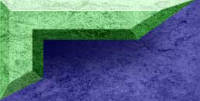|
|  |
|
|
 |
|
Accomidation reflex: focusing/ lens size changes, fades with old age.
Aqueous humor: fluid taht fills the space between the cornea and the lens.
Binocular vision: seeing with bolth eyes.
Blindspot: the part of the inner eye that you cant see anything from.
Choroid: Layer between the retina and the sclera.
Cones: Cone shaped light sensors.
Conjunctive: Membrane that pertects the eye.
Convergence reflex: Looking with both eyes.
Cornea: Transmits part of the eye.
Depth perception: how far away something is.
Farsighted: being able to see far away.
Fovea: A small area on the retina where the shapest focus occurs.
Iris: controls how much light goes in to the eye.
Law: something that reacures everwhere.
Membrane: thin piece of tissue.
Monocular vison: using only one eye.
Nearsighted: Being able to see near but not far away.
Nocturnal: seeing in the dark.
Photopupilary reflex: change in pupils size.
Retina: in which images are displayed on.
Rods: lets you see dark light black and white.
Sclera: white of the eye.
Tapetum: silvery layer in the back of your eye in
nocturnal animals.
Vibrations: Movement of atoms and molecules.
Wrap-a-round vision: to beable to see almost 360 degrees around.
|
 |
|
 |
|
 |
|
|
|
|
|  |

